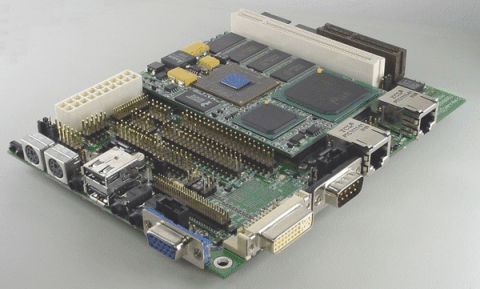embedded PC
Embedded systems usually have a stripped-down functionality that specifically supports the application in which the embedded product is used. Therefore, an embedded PC does not have to have the full functionality of a personal computer. There is a minimum requirement profile based on the CPU platform and the embedded operating system, and of course the application requirements, which are completely different.
This means that we are talking about flexible, scalable and modular-configurable hardware built on proven processor platforms that are supported over the long term. The same applies to embedded operating systems, which must be universal and real-time capable. The user programs that run on them can be created with just a few standard development systems.
Embedded PCs are designed for rack mounting; their supply voltage is 24 V( DC) or 230 V( AC). Most embedded PCs have the standard PC interfaces such as the PS/2 interface for keyboard and mouse, VGA interfaces or Digital Visual Interface( DVI), USB interfaces, LAN interfaces and parallel interface or even special video interfaces. They can also be equipped with interfaces for industrial field buses such as the CAN bus or Profibus.
If such an embedded PC is equipped with a hard disk, then miniature hard disks are usually installed for space reasons. Flash memory is used as an alternative.

